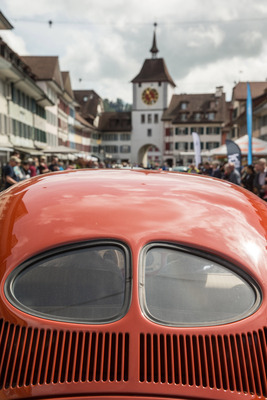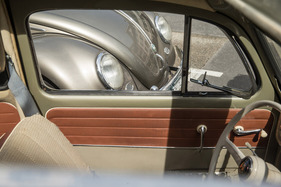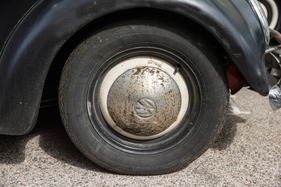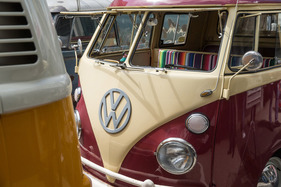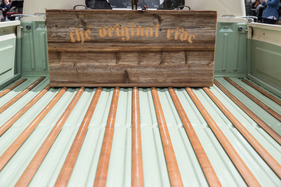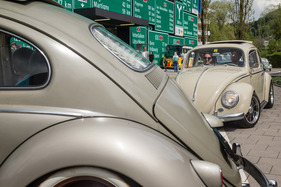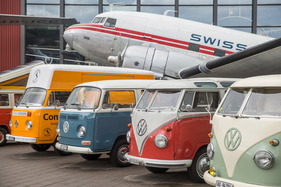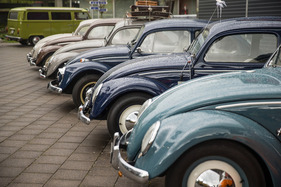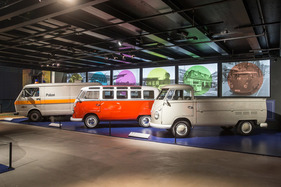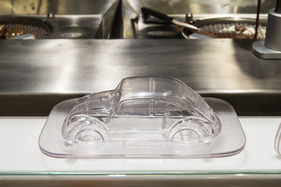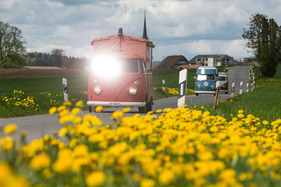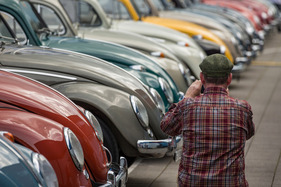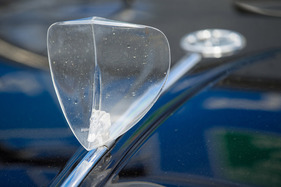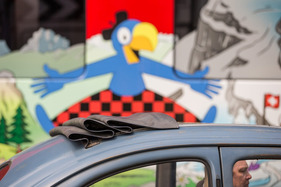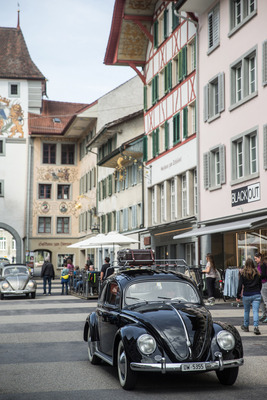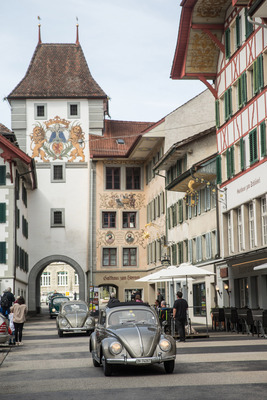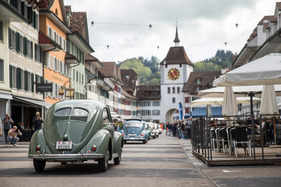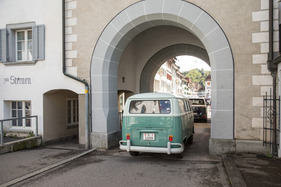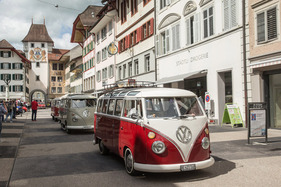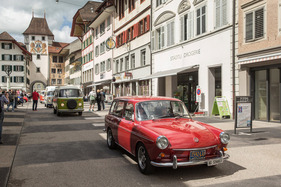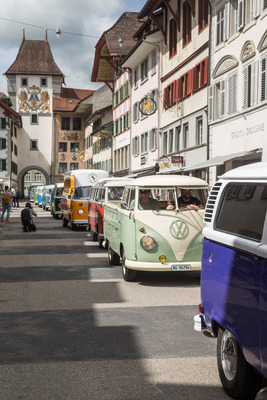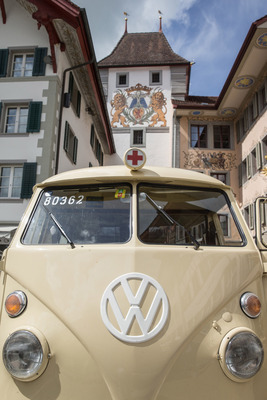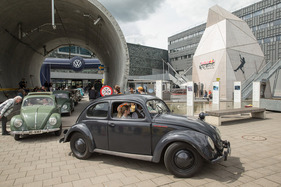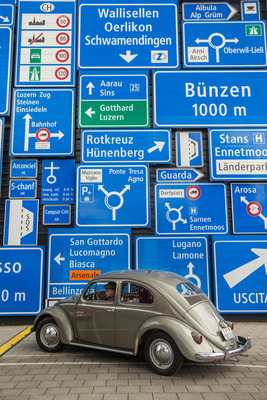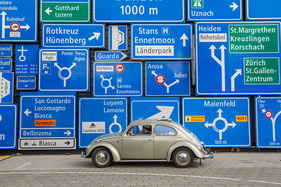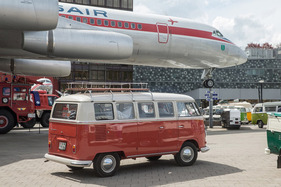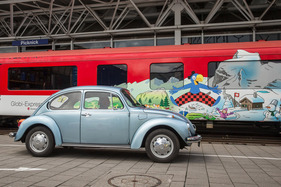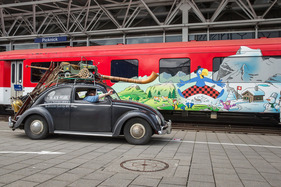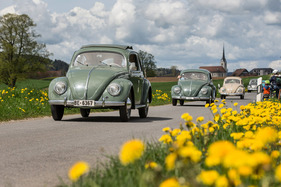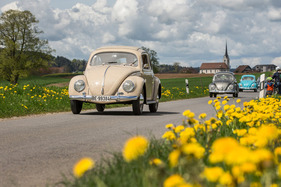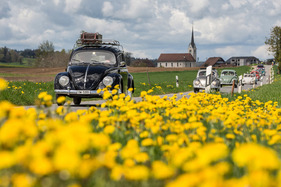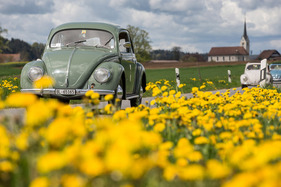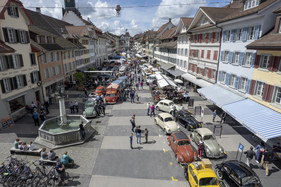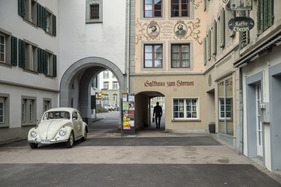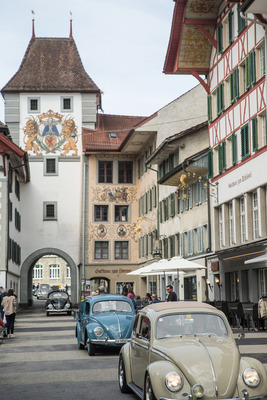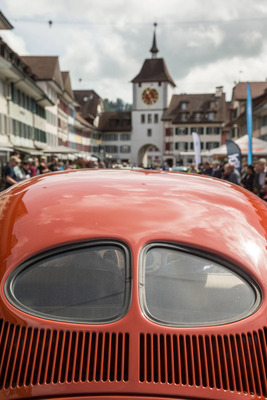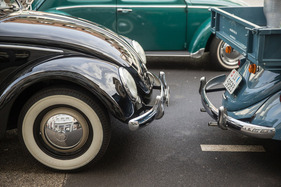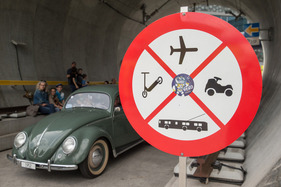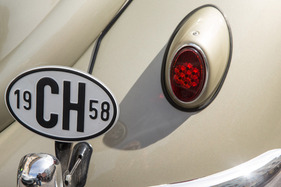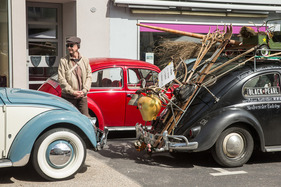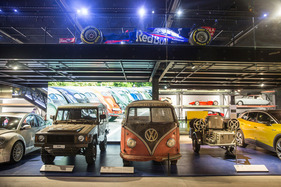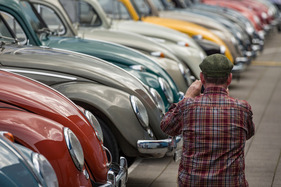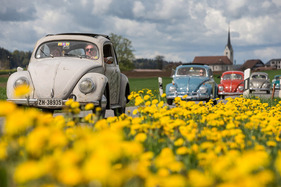In 1945, nobody in Germany believed that the first Volkswagens would roll off the production line just one year later. The Wolfsburg plant had been badly damaged during the war. Previously, Kübel and Schwimmwagen had been produced here; the saloon only as a commander's car on a special chassis. This came to an end in April 1945. However, the British occupying forces ensured that production was soon restarted. Initially for their own use - but also for the postal service or other public administrations in their own occupation zone. Further sales opportunities were seen in exports and, of course, the procurement of foreign currency.
AMAG founder Walter Haefner recognized the great potential and sought an importer contract with Volkswagen in Wolfsburg. With success: on April 29, 1948, a contract was signed between Volkswagen and AMAG founder Walter Haefner for the exclusive import and distribution of the Volkswagen in Switzerland. One week later, at the beginning of May 1948, the first 25 Beetles arrived at AMAG, having traveled on axles from Wolfsburg. At the Riehen border crossing near Basel, the vehicles were cleared through customs and handed over to the dealers, who paid in cash. After the Netherlands and Belgium, VW had already opened up its third export market with AMAG. In the first full year of sales, 1380 vehicles were registered. By 1954, AMAG had already sold 10,000 units, giving it a 30 percent share of the Swiss market.
AMAG (Automobil und Motoren AG) was based in Zurich and was already the second-largest automobile importer in Switzerland after the war. Later, it even built its own assembly plant in the small town of Schinznach-Bad in the canton of Aargau, around 30 kilometers west of Zurich. Between 1949 and 1972, around 30,000 vehicles were completely assembled in Schinznach-Bad, including brands such as Standard, Plymouth, Chrysler, De Soto, Studebaker and Dodge. AMAG even manufactured the Karmann Ghia Type 14 coupé here. 1098 units were produced between 1957 and 1960. This made AMAG one of only four plants worldwide to produce this model: Volkswagen do Brasil in São Paulo, D'leteren in Brussels and, of course, Wilhelm Karmann in Osnabrück.
75 years of Volkswagen Switzerland: the celebration
What began in the spring of 1948 with a handful of Beetles was the start of Volkswagen's success story in Switzerland. AMAG still operates from the Schinznach-Bad site today and is the only importer and sales partner for Volkswagen Group products in Switzerland. To mark the 75th anniversary of Volkswagen's presence in Switzerland and the delivery of the first Beetle, the company organized two convoy drives, which took place on 29 April 2023.
The first convoy, consisting of 75 vans from the T1 and T2 series, started in Schinznach-Bad in Aargau, while the second convoy of 75 Beetles set off from Aarberg near Bern. The two convoys of VW classics were each divided into several smaller groups. Both the Beetle group and the buses took selected routes to the small town of Willisau, where they met on the beautiful main street and took a break.
A crowd of people awaited the VW classics here. Whether "Samba" or "DoKa", Postbus with high roof or delivery van, standard Beetle, roll-top saloon or Beutler flatbed, export, "Brezel" or "Ovali" - no two vehicles were alike. Both the participants and the visitors had plenty to marvel at - and the weather was excellent. On the journey from Zurich to Aarberg, the weather had looked rather modest. The Kreuzgarage in Willisau had organized the rest stop excellently and used the passage of the caravan to celebrate its own 75th anniversary, making it one of the first VW dealerships in Switzerland.
A big welcome at the Lucerne Museum of Transport
The journey continued on various routes to the Museum of Transport in Lucerne, where all the groups arrived more or less together and occupied the entire space of the inner courtyard. What a parade of magnificent vehicles in such a small space and in such beautiful surroundings! The visitors to the Museum of Transport stood in line and, as in Willisau, cell phones were pulled out to take photos. For each participant, it was probably the day on which they were photographed the most by other people.
The day ended with a big celebration. Of course, a few vehicle awards were presented beforehand. Three Beetles and three buses each received awards. A large buffet rounded off the evening with culinary delights before all the participants set off on their journey home. Refueling was the order of the day: with the journey and caravan ride, most of the participants' tanks were empty. So there was another small vehicle exhibition in front of the filling station at the Swiss Museum of Transport.
My daughter, who is currently taking her driving test in Basel and was my co-pilot in the '52 Standard Beetle, concluded: "This is real German engineering. Today, cars are computers that you can still drive by chance." The whole analog aspect of driving a Beetle seems to have impressed her more than Volkswagen's success story in Switzerland.









